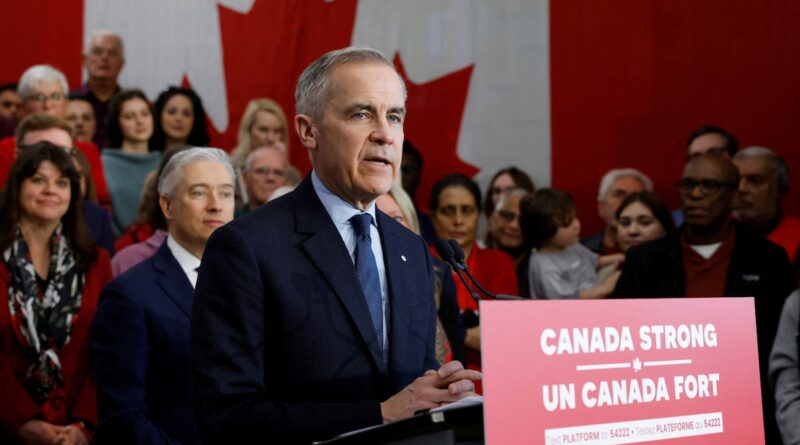Liberal Party releases election platform that includes larger deficits, $28-billion in undefined spending cuts
Liberal Leader Mark Carney announces the release of his party’s platform at Durham College in Whitby, Ont. April 19.Carlos Osorio/Reuters
Liberal Leader Mark Carney’s election platform relies on larger projected deficits in the coming years and $28-billion over four years in undefined spending cuts in order to cover the cost of his party’s campaign promises.
With advance voting under way this weekend and just over a week to go before election day on April 28, the Liberal Party released a fully costed platform Saturday morning.
Mr. Carney and the other federal party leaders have been making large spending and tax-cut announcements throughout the campaign, but went into the leaders’ debates before releasing platforms that explain how the promises would be funded.
Canada is heading toward an election outcome not witnessed in generations
The Liberal platform includes some new spending items that have not previously been announced, but most of the pledges were mentioned during the campaign.
The platform outlines nearly $130-billion in new spending over four years, or about $32-billion per year on average.
Spending on defence and housing, along with tax cuts, are among the largest items in the platform in terms of fiscal cost.
The starting point for the Liberal platform’s costing is a baseline released last month by the Parliamentary Budget Officer, which showed the federal deficit falling from 1.47 per cent of GDP this fiscal year to 1 per cent next year.
That PBO report did not attempt to account for the economic impact of the trade disputes over tariffs between Canada and the United States.
In the December fiscal update, the government of former prime minister Justin Trudeau had said keeping the deficit below 1 per cent of GDP as of the 2026-27 year was an example that it was demonstrating fiscal sustainability.
Mark Carney’s business experience cemented his reputation for pragmatism
However, that target is being set aside in Mr. Carney’s platform, which projects a deficit of 1.96 per cent of GDP ($62.3-billion) this fiscal year, followed by 1.83 per cent of GDP ($59.9-billion) the next year.
The platform says the deficit to GDP ratio will decline to 1.36 per cent in 2028-29.
The Liberal platform does not make any adjustments to account for trade impacts.
It does however include $20-billion in expected revenue for the current fiscal year from Canadian-imposed countertariffs. The Liberals have said the revenue from new tariffs will be used to support affected workers and businesses.
The Liberal platform also breaks down spending into two categories: operating and capital.
Historically, federal budgets and other financial reports do not categorize spending in this way, but Mr. Carney has said this approach is inspired by other countries such as the United Kingdom and is meant to show that the government is emphasizing capital spending that supports long-term investment.
The platform shows a $9.2-billion deficit in operating spending for the current fiscal year that will become a small surplus by the 2028-29 fiscal year.
“This new approach will not change how Canada’s public accounts are built and will maintain generally accepted accounting principles. It will create a more transparent categorization of the expenditure that contributes to capital formation in Canada,” the platform states.

